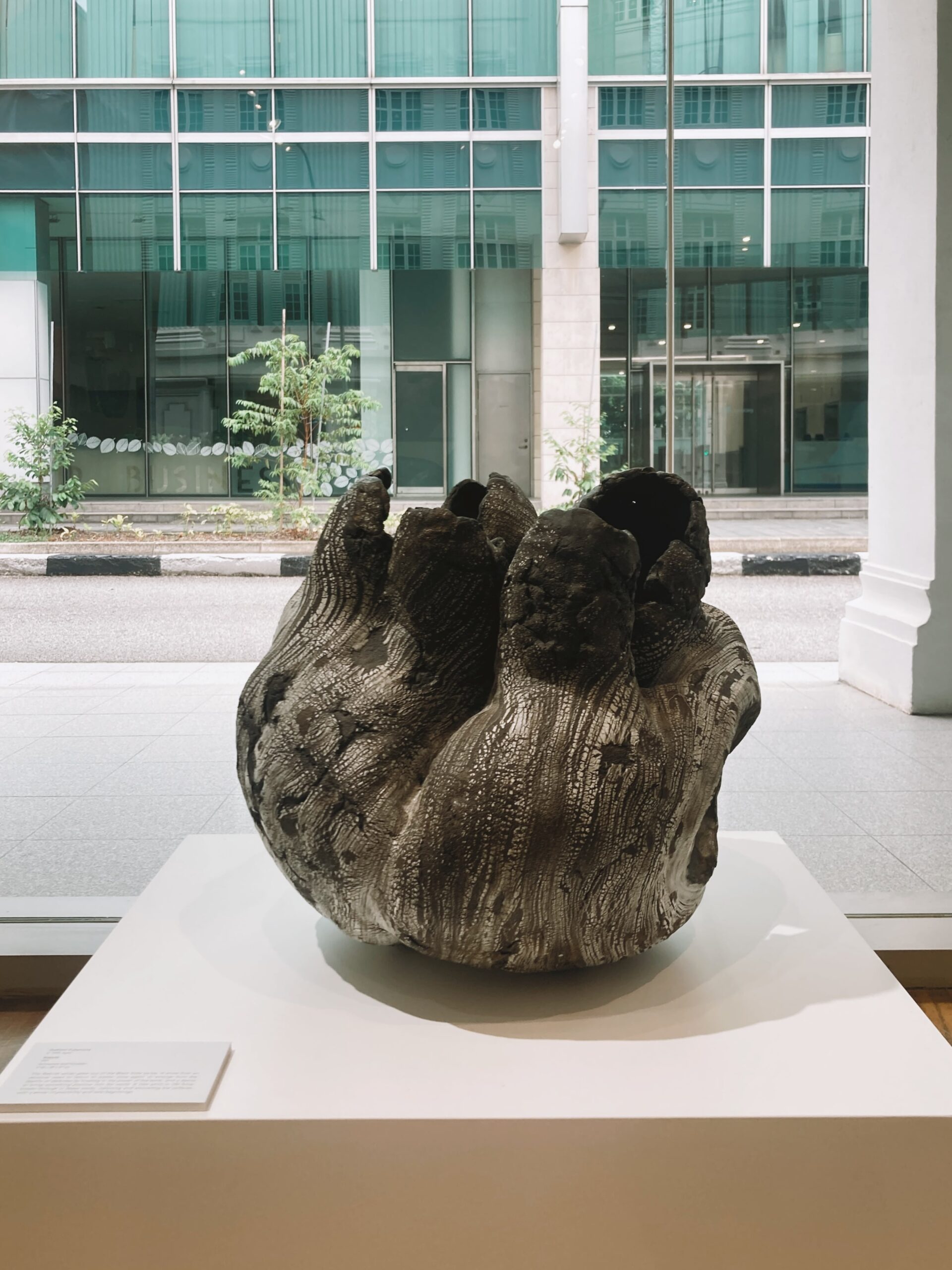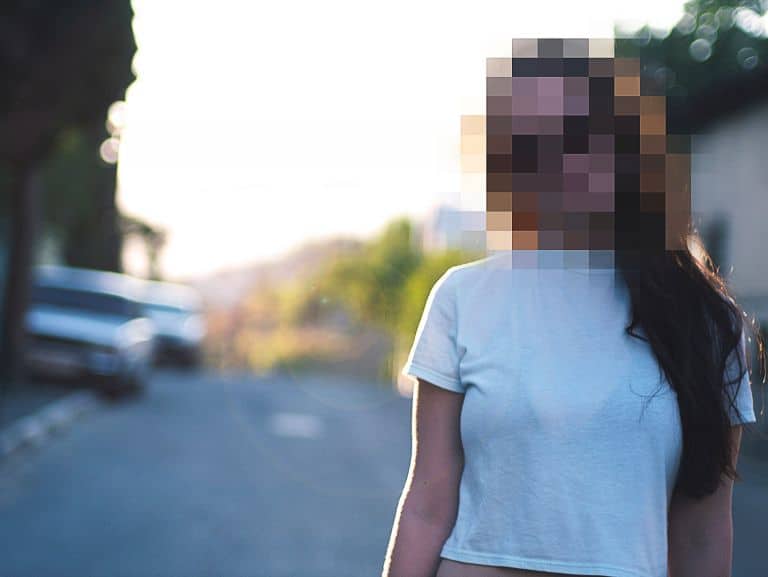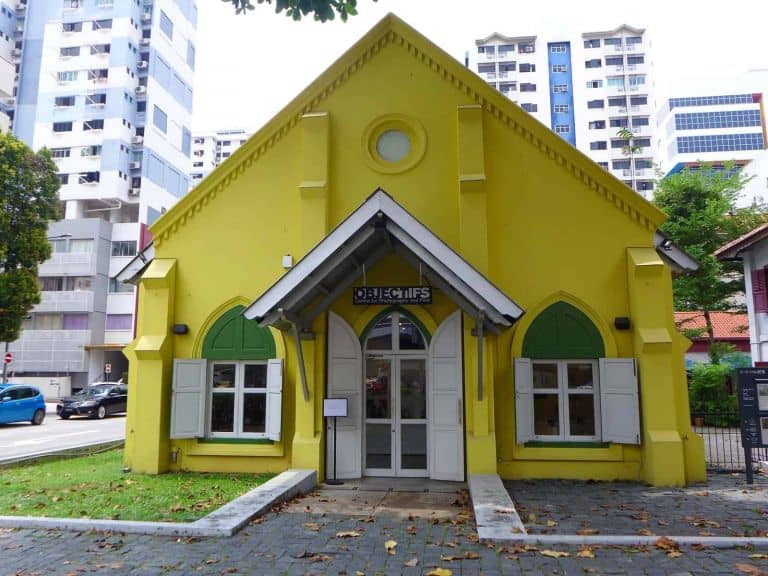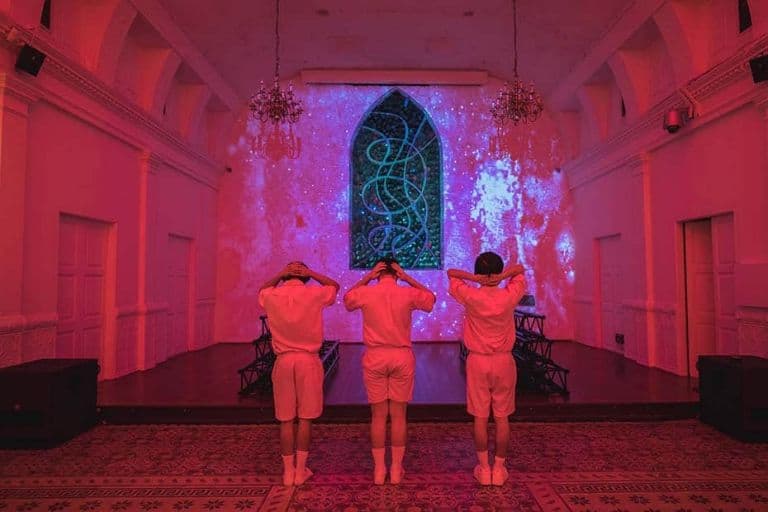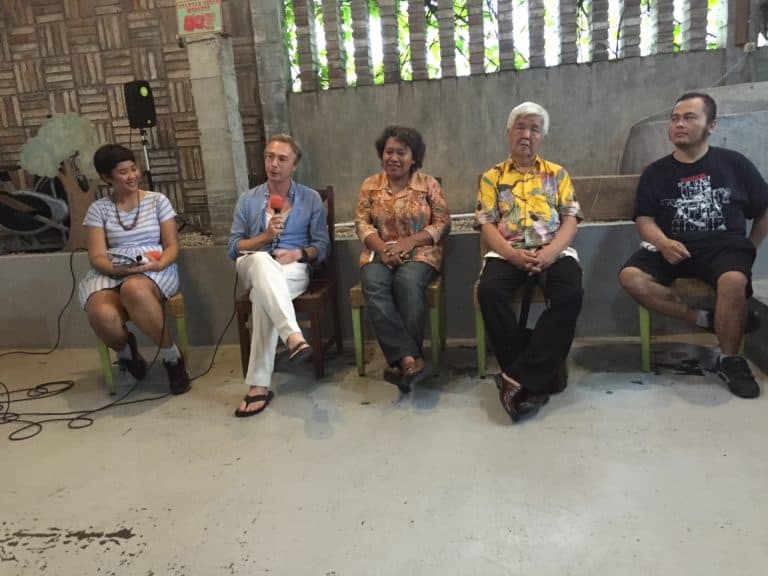Along Armenian Street, Yoshimi Futamura’s Rebirth peeks out of Mulan Gallery’s glass facade. An impressively large organic form, the sculpture sits low to the ground, inviting you to peer into it from above, crouch down and look through its sides, or close in to examine its rich textures close-up. It’s a strong, eye-catching work that sets the tone for New Earth – Rebirth, along with Flying, Futamura’s other exhibited work, are the literal centrepieces in the gallery that anchor the show, flanked by the twelve Singaporean artists’ pieces each perched on its own white plinth.
It has been a busy few months for the Singaporean ceramics scene: Mud Rock Ceramics’ first Clay Camp happened just over a month ago, and the annual Singapore Clay Festival, just two weeks ago; add to that the multitude of craft and pottery markets popping up just in time for the holiday season. Amidst these bustling festivities, visiting Mulan Gallery’s New Earth is quite the distinct experience, but a great one for ceramic lovers all the same. It is the 6th edition of the Gallery’s annual group show Ceramic Expressions, which aims to encourage and exhibit developments in Singaporean modern ceramic art.
It’s a quiet Saturday afternoon when I visit the show; a few interested buyers and one of the artists and her friends mill around the compact gallery, slowly inspecting each of the works. An unusual but pleasant addition immediately draws my attention upon entering – a screen sandwiched between Verdant Cosmos and Awaiting Spring, displaying short reels of the artists carefully creating their works. As someone who often gripes that exhibitions are too focused on the final products at the expense of their creation process, this is a welcome feature, particularly given Ceramic Expressions’ aim of “foreground[ing] studies in new styles and techniques”.
Earthy textures
What stands out immediately amongst the variety of works are the textures. Some are earthy, iron spots and grog surfacing into uneven topographies, others are so sleek and translucent they could be mistaken for glass. Particularly magical is Daisy Toh’s Awaiting Spring, a paradoxically flat, colourful topography that almost appears to move and flow.
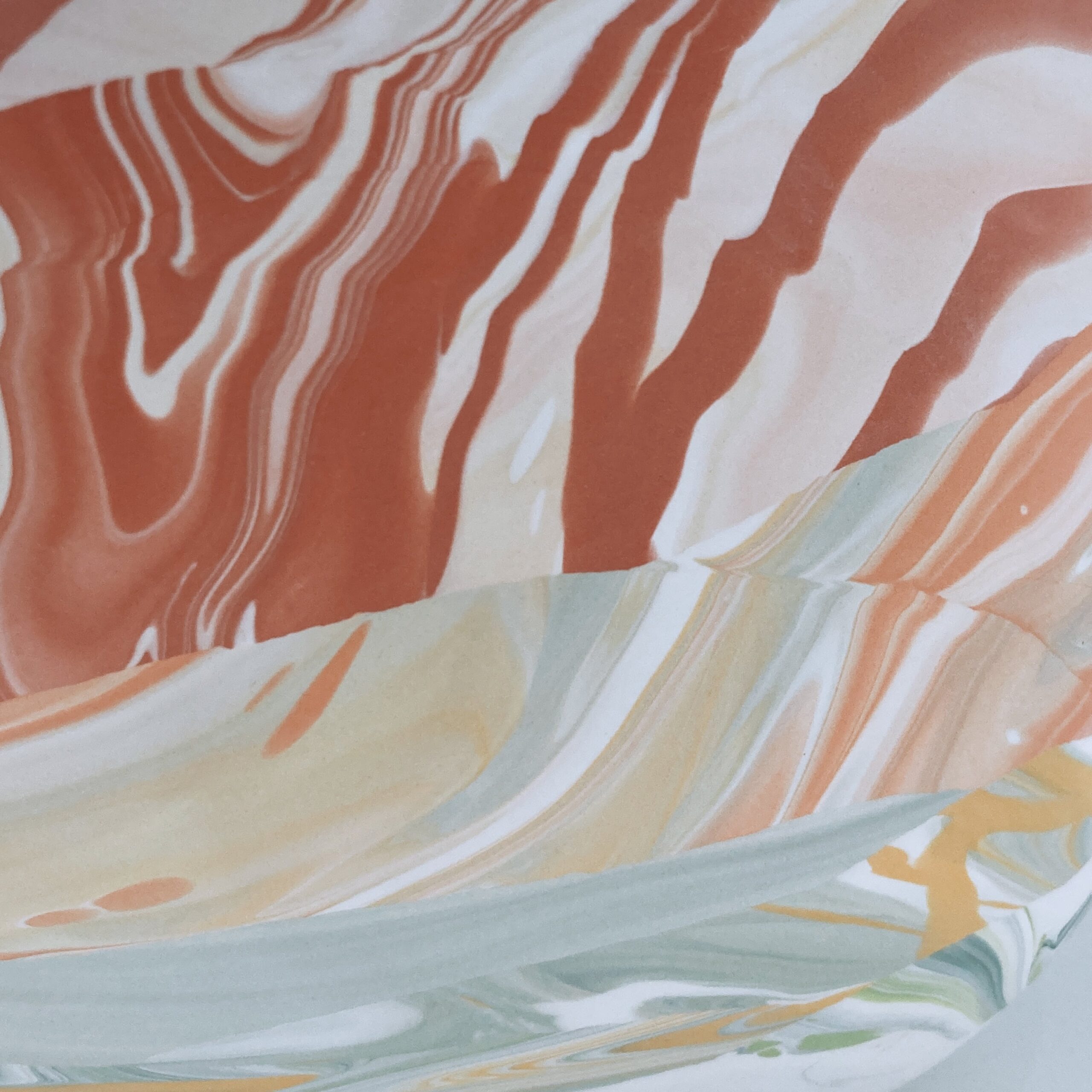
Futamura’s Flying, viewed from above, could be a glacial landscape defrosting at the end of winter, snow melting away to expose rock. The very different bodies of stoneware and porcelain, layered and dried and stretched, appear frozen in time.
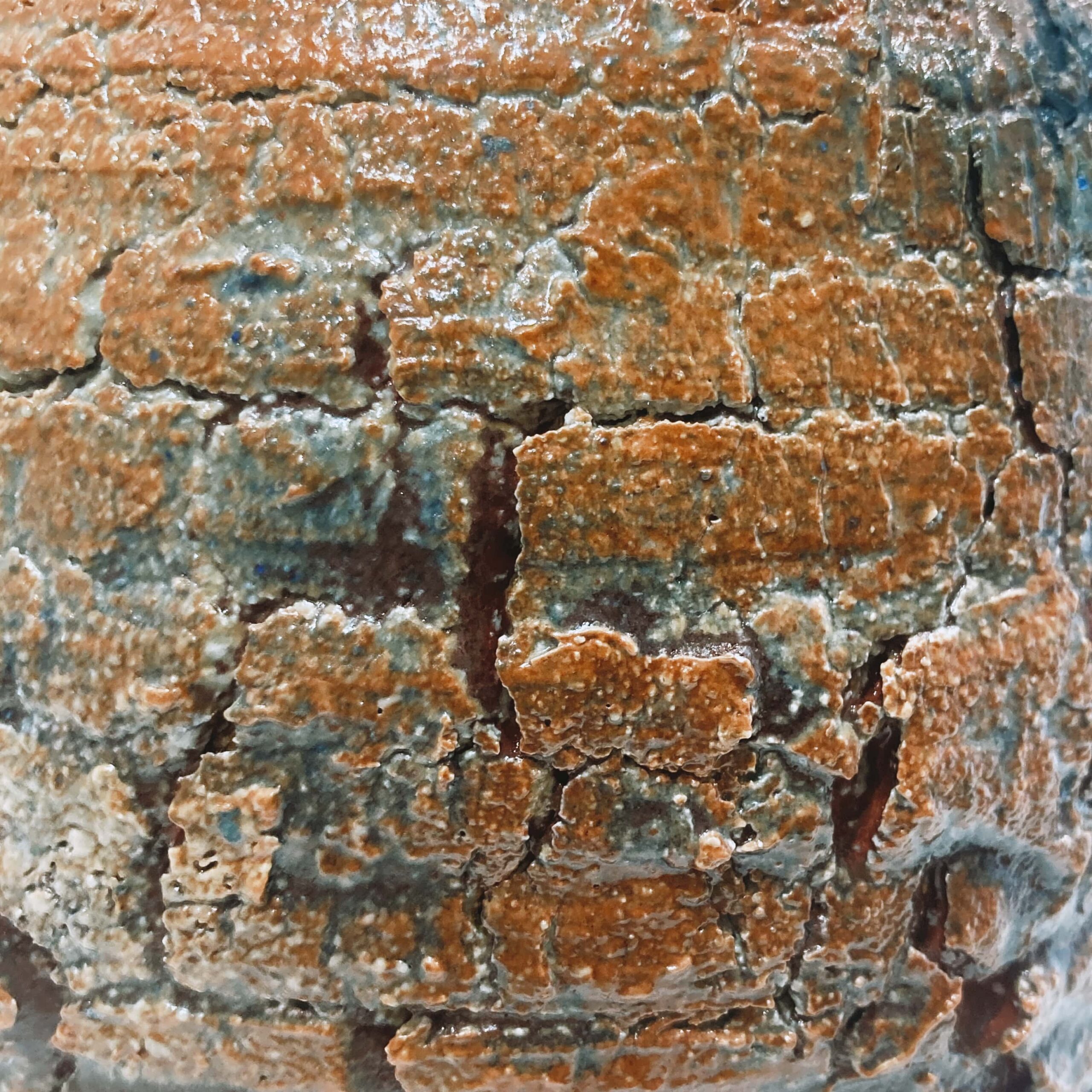
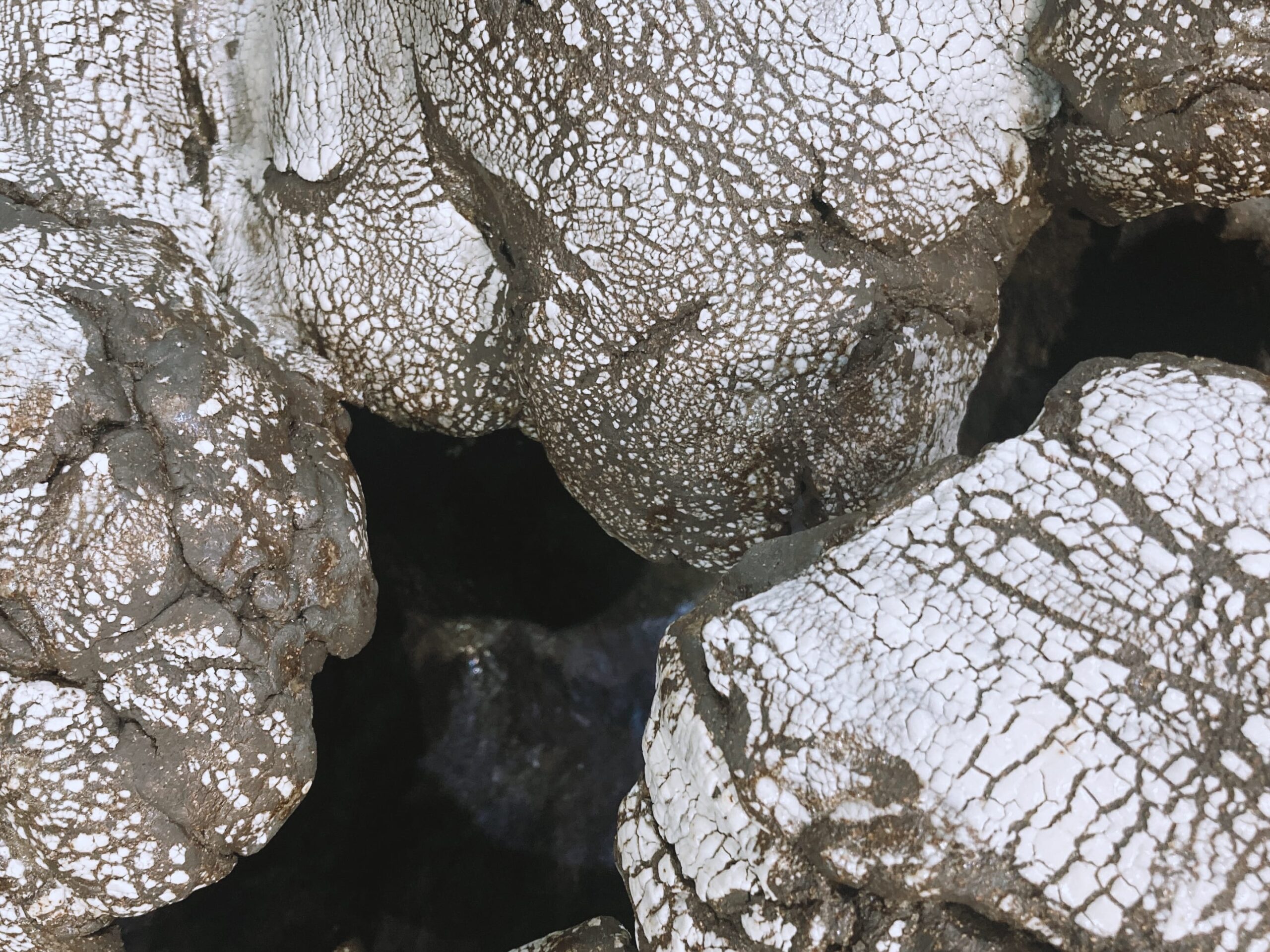
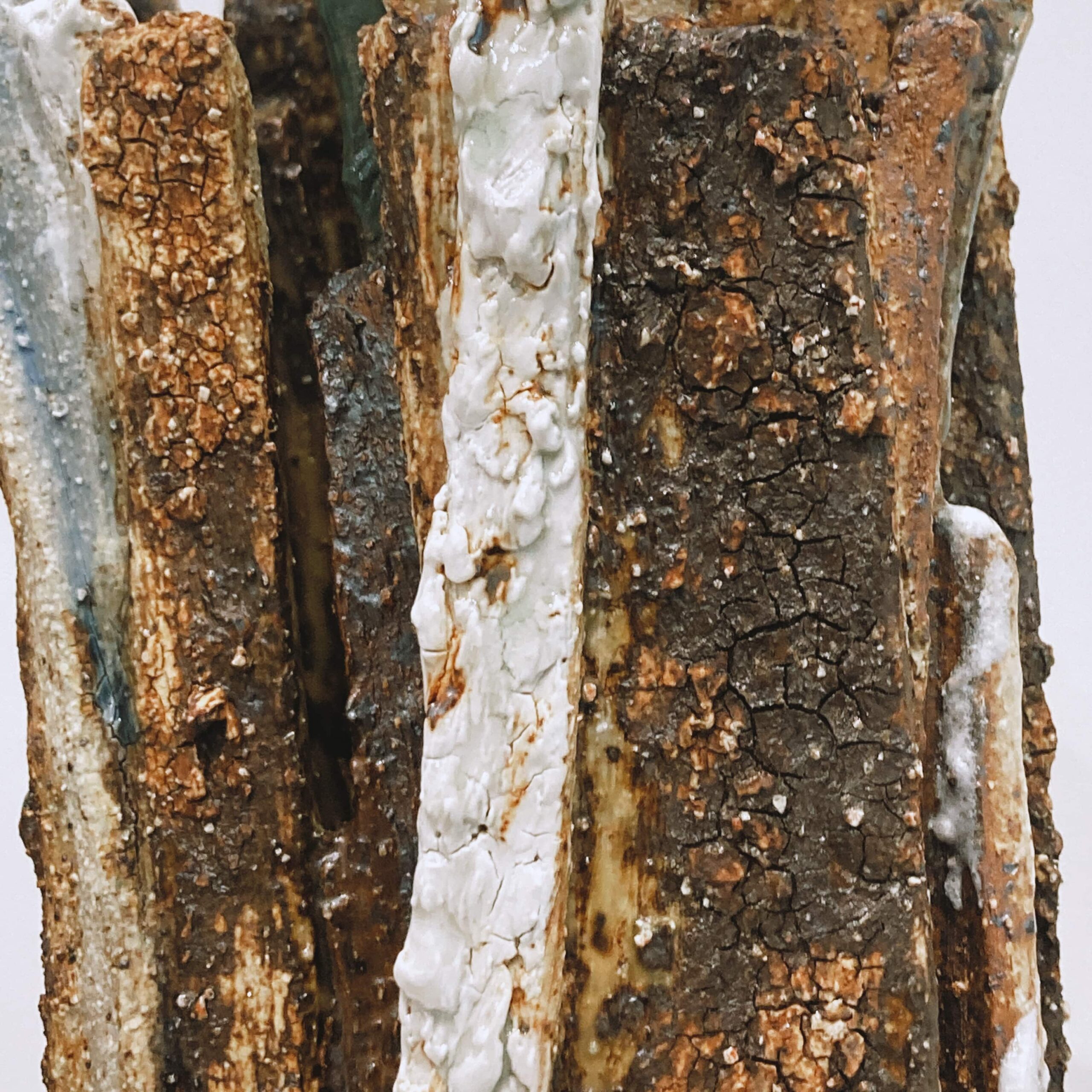
Cracks in Keretakan, Flying, and Feuillemort I
Keretakan and Feuillemort I & II seem to employ similar techniques, layering slips – liquid slurries of clay and water – and glazes and oxide washes to create intriguing surfaces, full of crags and cracks. It is quite the aesthetic – one that seems to have been catching on lately both in Singapore and abroad. I’ve seen them on sculptural pieces, but also on a fair number of planters and tea bowls.
I notice that most – if not all – of the works are made using a variety of ceramic techniques. Perfect wheel-throwing, sometimes considered a more advanced, “professional” technique, is largely eschewed in favour of slow hand-building. It makes me recall another conversation I had with a potter a while ago, that although making pots on the wheel is sometimes seen as the pinnacle of pottery skill, hand-building is a lot more difficult to master, and good hand-builders can make anything that wheel-throwers can – and as we see here, complicated textural forms that wheel-throwing alone cannot produce. Where the potter’s wheel is used – for instance in Agnes Lim’s Bloom series – the regular, circular forms are slowly carved and caressed, softening the strong porcelain. Complementing the high levels of technical skill are deliberate marks of the hand, reminding me of the artists behind these works.
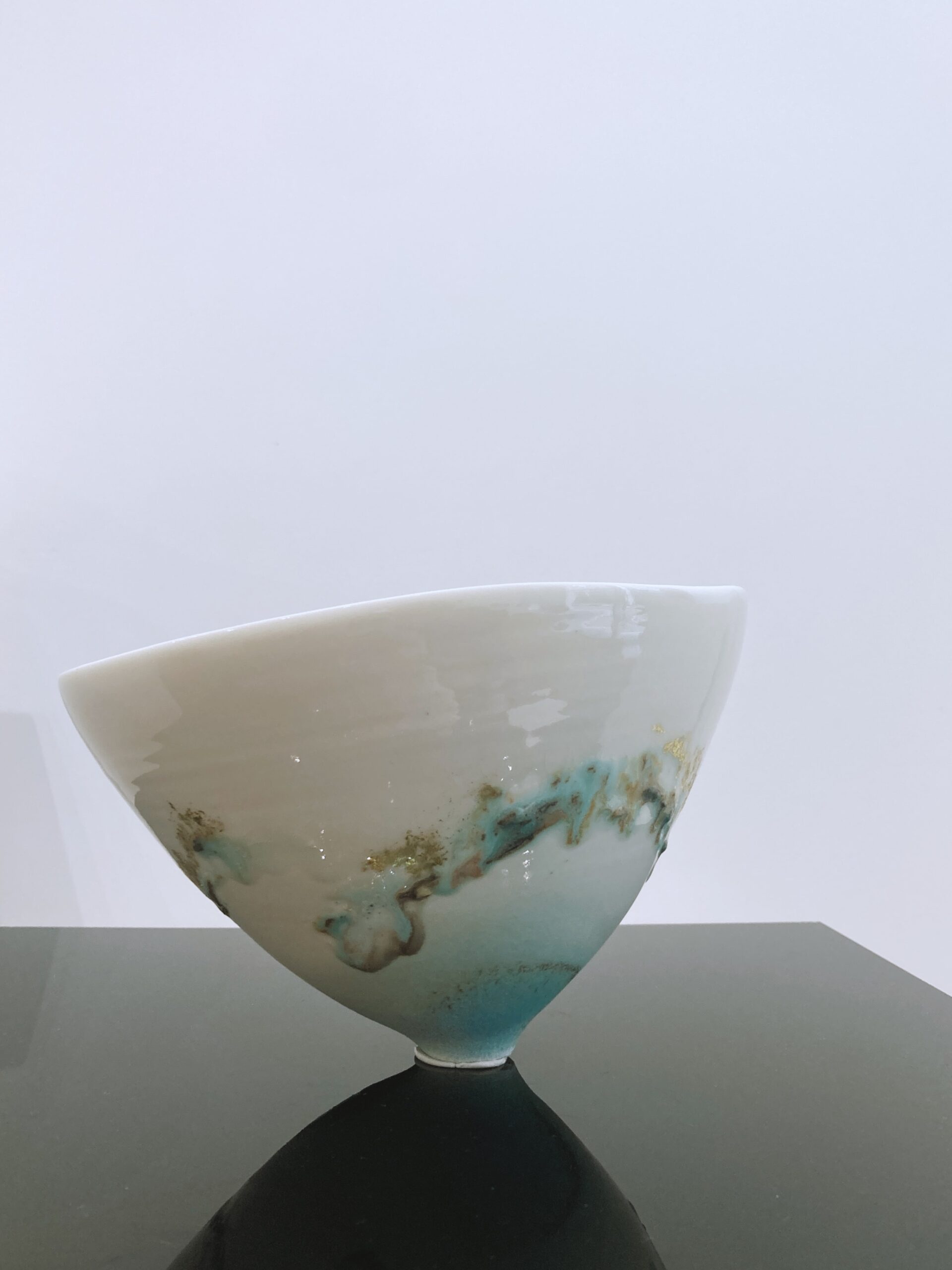
There is a lot of slow assembly – I see Alan Chong on screen painstakingly applying textures to Sunfacer and Verdant Cosmos, and Teo Huey Min slowly removing the seed pods which make up Orb #5 and #6 from their individual plaster moulds and attaching each one by hand; I can only imagine the effort put into the tiny blossoms in Suriani Suratman’s Mekar & Segar trio. These textures require the artists to know their materials well – the right levels of dryness, the correct clay bodies to use, the correct time to continue the next step of the process.
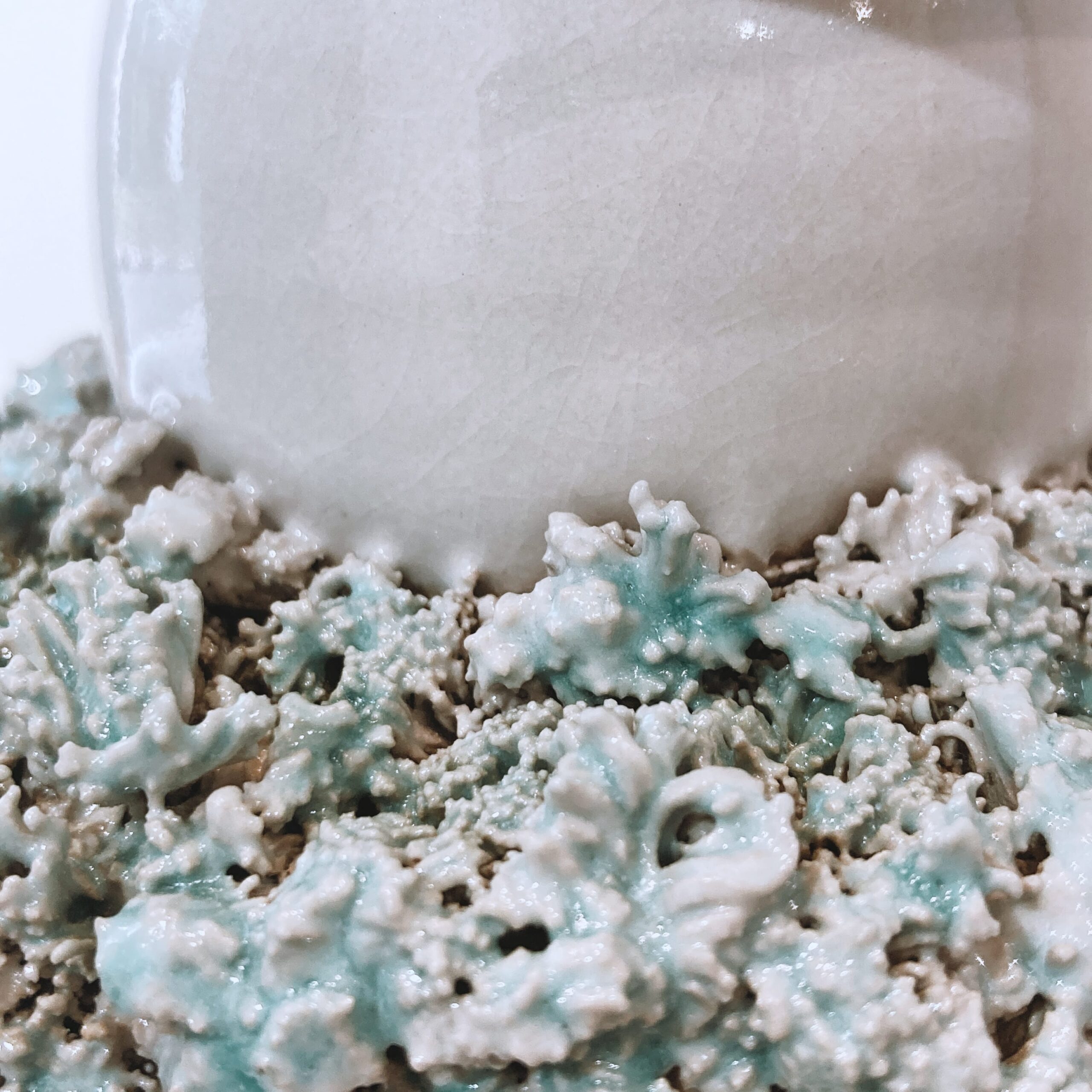
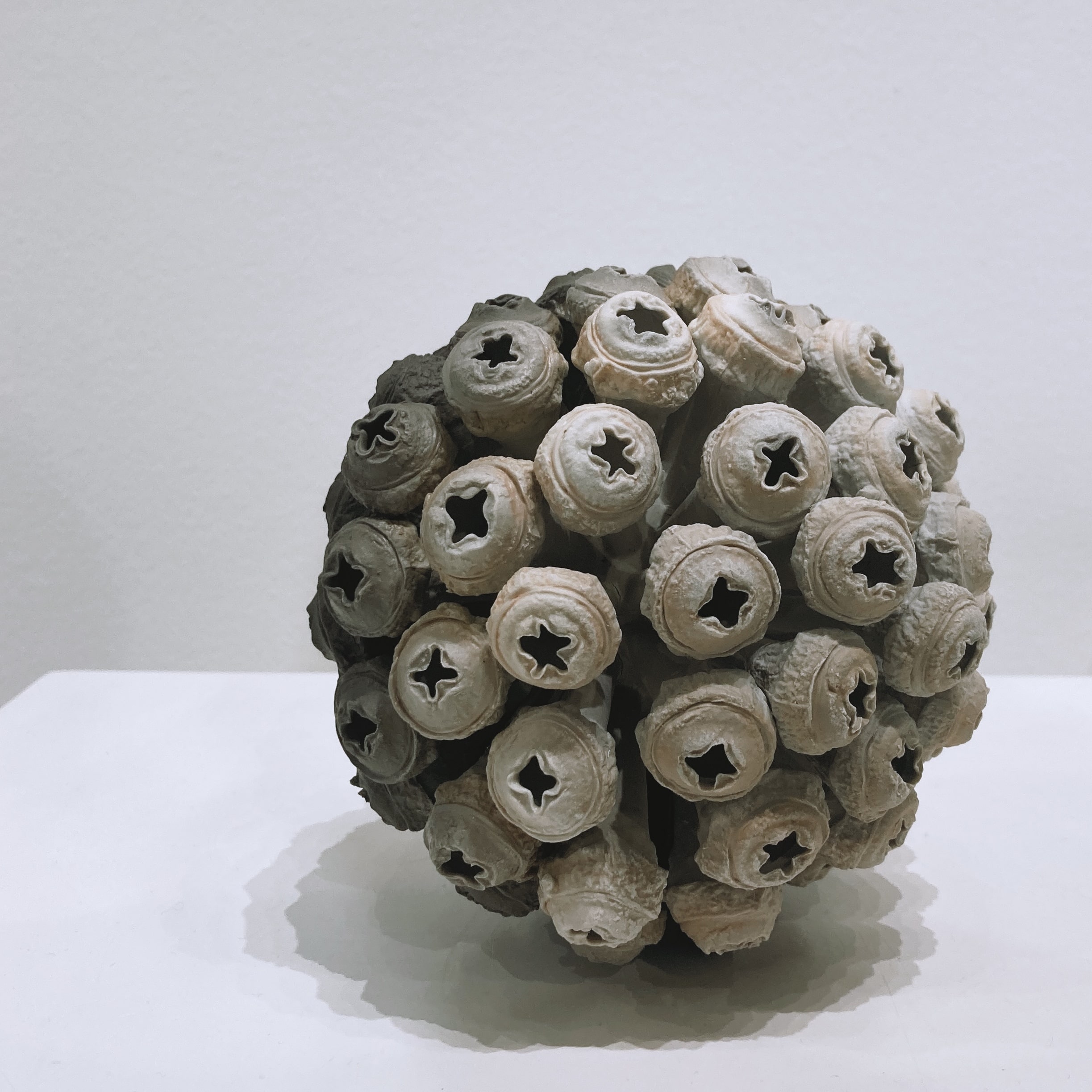
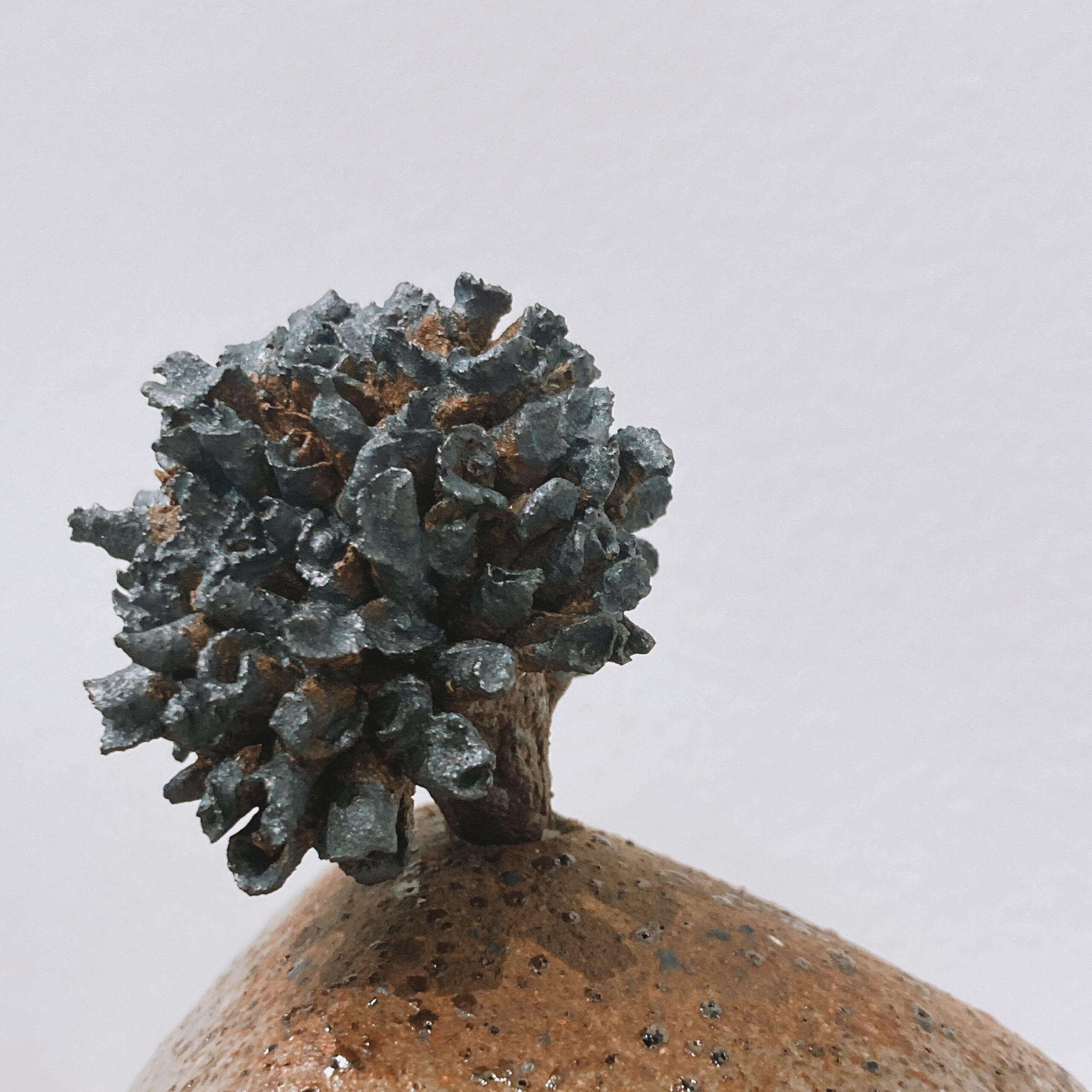
Slow textures in Verdant Cosmos, Orb #5, and Mekar & Segar.
The works indeed speak of new earth, not just of shifting into the post-pandemic period, but also to emerging global trends and techniques in ceramics. Besides cracking textures, the use of slip-casting stands out. Slip-casting, a forming process by which slip is casted in plaster moulds, is commonly used to form mass-produced ceramics, and might not be as traditionally associated with ceramic art as it is with industrial design. Yet Daisy Toh’s and Teo Huey Min’s innovative and intricate takes on this slip-casting challenge such stereotypes and hierarchies, reminding us that art isn’t confined to a specific medium or process. Perhaps I would have liked to see it go a little further: I would have liked to see the inclusion of more functional wares into this canon of ceramic art, particularly given the growing movement towards handmade ceramics. Ceramic art, at least for me, doesn’t just have to be sculptural – and sculptural pieces can very much be functional too. After all, many of the participating artists do also have lines of functional wares!
Earthen Materials
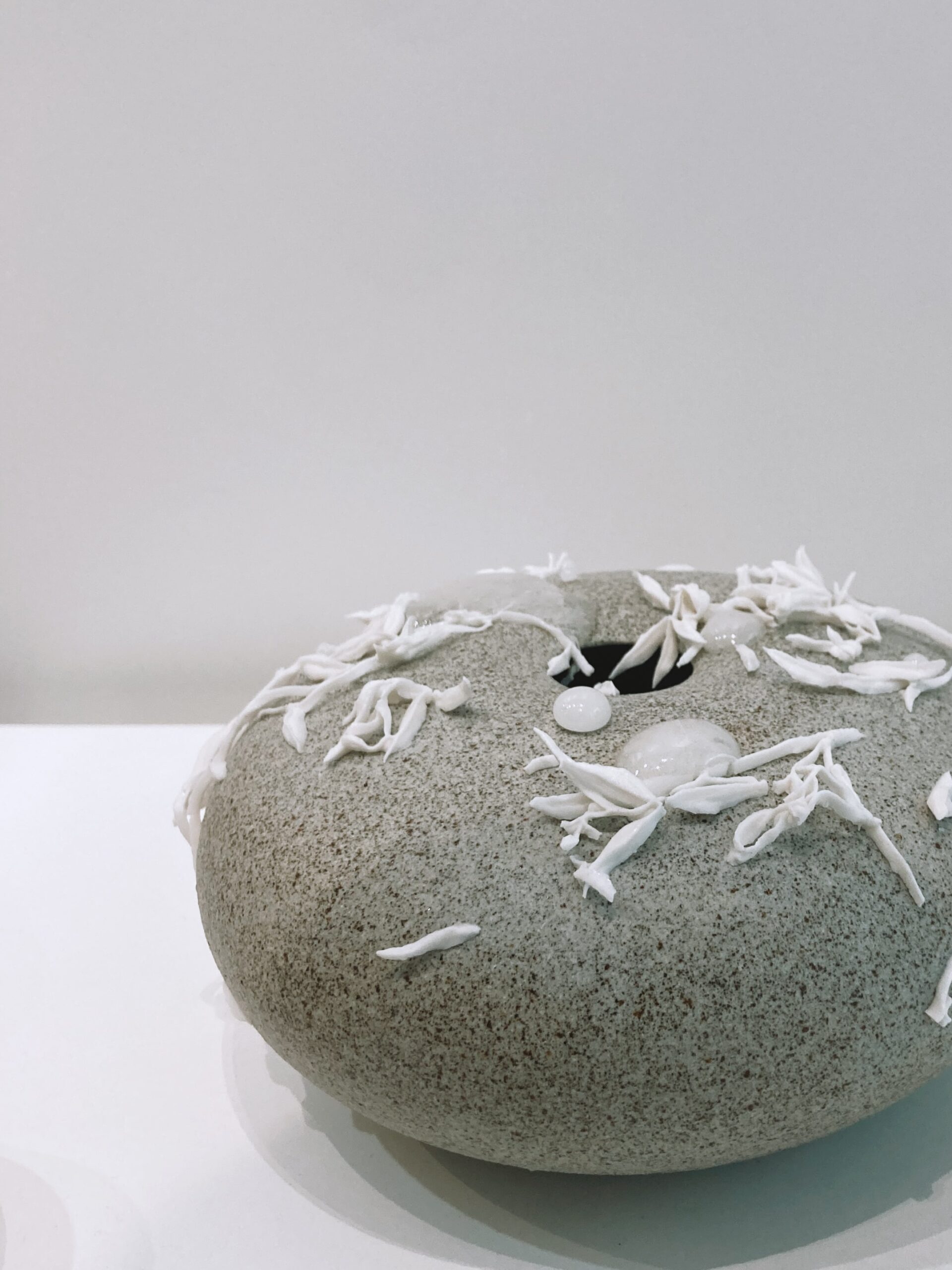
The material explorations go beyond technique and process. I was particularly taken by Tan Shao Qi’s Morning Dew, a lovely material deconstruction. Flux and porcelain – typically ingredients that might be used in glazes – crawl and dance instead upon unglazed stoneware, calling attention to materials that are often taken for granted in glassy, perfect ceramic surfaces.
I also notice efforts to call attention specifically to Singaporean materials; both the Mekar & Segar and Feuillemort series make use of local Singaporean clays, whether layered as slip or used as the main body. It must not have been easy to obtain this clay; apart from the question of sourcing, “wild” clay must be quite rigorously processed and tested to be usable.
Again, these works are representative of wider trends in the ceramic scene. Foraging local “wild” clays – instead of using bagged, processed, often imported clay – has become quite popular with Euro-American ceramics, and is slowly catching on in Singapore. For a country that imports much (if not most) of our clay and ceramic materials, this is noteworthy; in my view, at least, it seems a signal of the increasing movement towards sustainable ceramics – towards understanding where our materials come from, the difficulties (and costs) of their extractions, the emissions of importing from abroad, and consequently, the increased interest in local sourcing.
Along the same lines, I would have liked to see works incorporating recycled materials; after all, a number of local ceramicists are working on this – Morning Dew’s Tan Shao Qi is in fact working on incorporating studio and industrial waste into handcrafted objects at Shao Studios, while Genevieve Ang is working on Other Supply, an experimental lab seeking to recycle discarded wine bottles into ceramic glazes.
Crossing the Earth
I find it interesting that a Japanese guest artist takes centrestage in an exhibition about contemporary Singaporean ceramic art, and yet more interesting that the conversations I overhear are about Japan and its ceramics. Japanese-born, Singapore-based ceramicist Hiroko Mita’s Feuillemort series is one I hear discussed – the gallery manager tells me that her works have been very popular; both had already sold on the second day of the show and the gallery had to bring out some of her older pieces for interested visitors.
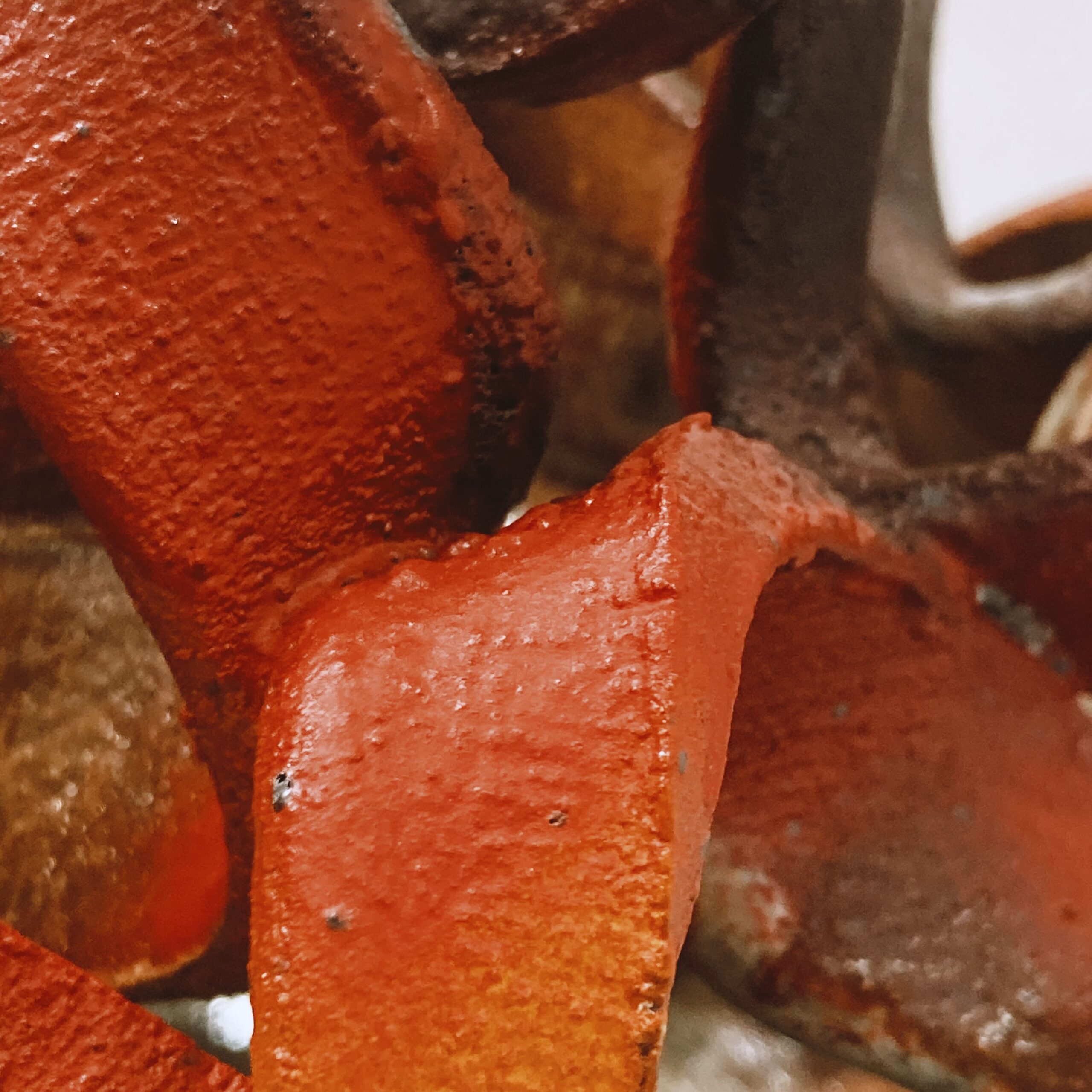
But of course, much of the conversation also centres on Dr Iskandar Jalil, arguably the most famous Singaporean potter, who was trained in Japan’s Gifu Prefecture and continues to work closely with the Japan Creative Centre even today. Remarkably, just under half of the participating artists trained under him. His influence is evident in Hiroko Mita’s strong sculptural slab forms, and the contrast between the bright red stains and earthy dark clay in Hazel Ng’s Flame I & II.
Significantly, it is not just Japanese ceramics represented here. Combined, the participating artists have quite the global CV – Daisy Toh and Teo Huey Min both studied in Taiwan (the latter also took up a residency in Kanazawa, Japan); Tan Shao Qi, in London; Alan Chong, in Jingdezhen and Barcelona. Mekar & Segar incorporates not only Singaporean clay, but materials from Melbourne and Germany.
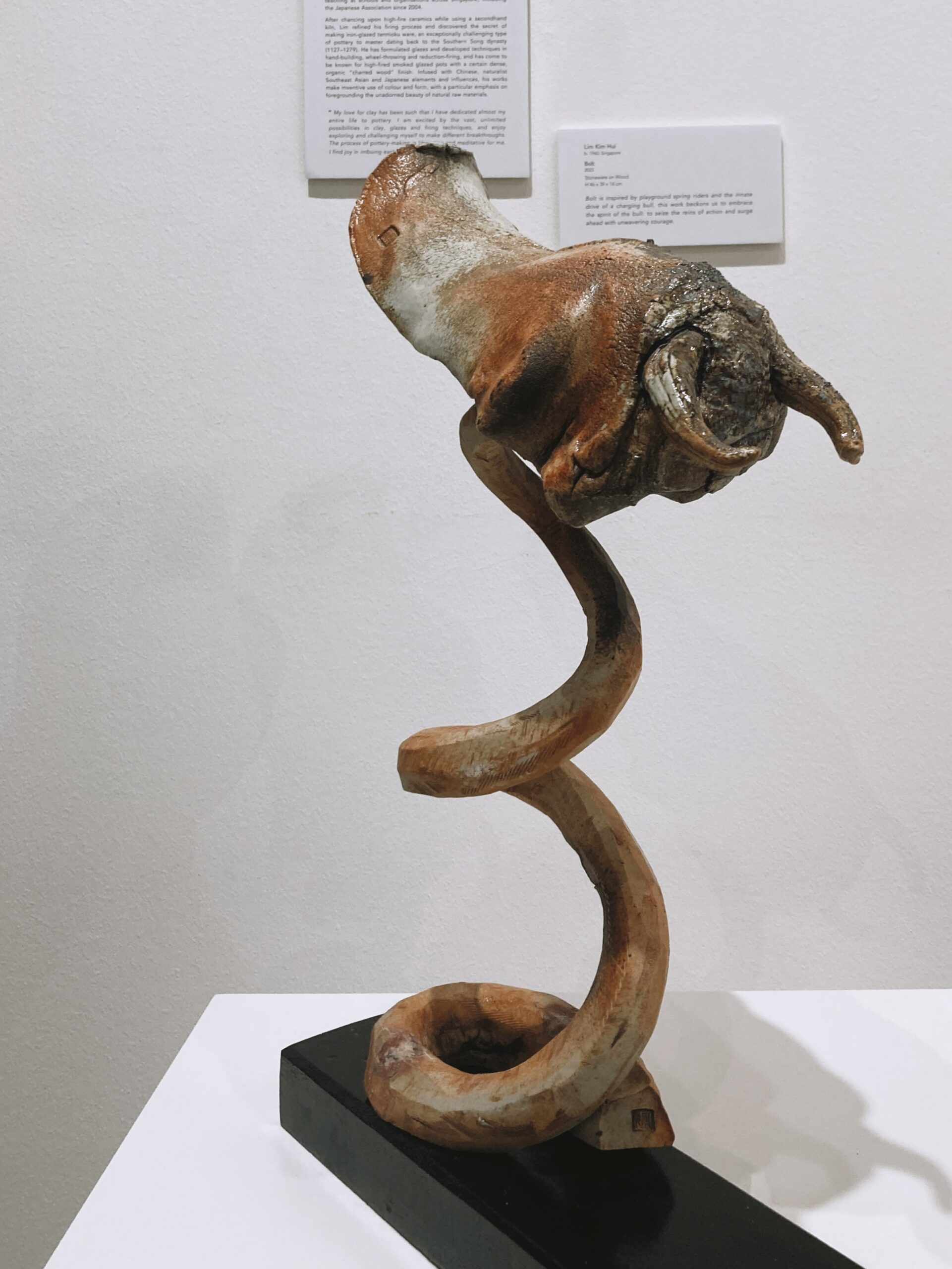
These global influences are still, however, grounded in Singapore, and not just through the literal use of Singaporean ground. One of my favourites is Lim Kim Hui’s Bolt, which playfully blends the energetic childhood nostalgia of Singaporean playground spring riders with muted tones and glaze textures that reveal his Japanese influences. And maybe it’s a bit of a stretch, but my first thought when I saw the Convene in Curves series was how much the texture and forms represented freshly-fried keropok – and I mean this in the best way possible.
The works are not just a product of these global movements; they themselves brim with movement – running lines in Feuillemort, gentle unfolding in Flying and Bloom and Spring Bouquet II. Spring comes again, in Bolt and the cheerful waves of Awaiting Spring. They speak of new things breaking forth, and growth – whether seed pods about to burst open, as Orb #5 & #6, Mekar & Segar’s flowering blooms, or the gentle fissures in so many of the works. Amidst these openings, growths, and eruptions, the works remain hopeful, and invite us to hope in a future yet still developing.
___________________________________
New Earth runs at Mulan Gallery till 30 November 2023.
Header image: Rebirth by Yoshimi Futamura peeking out into Armenian Street.
